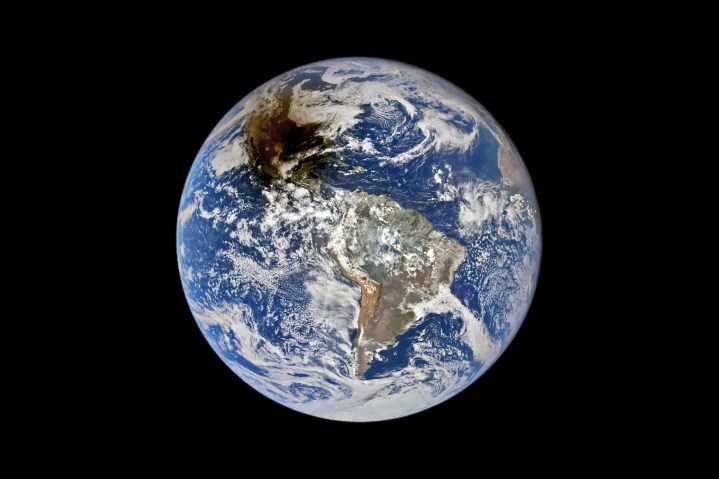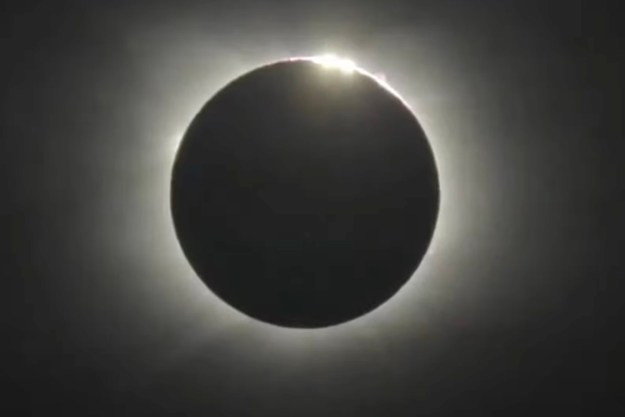
Folks across parts of the U.S. were treated to the spectacular sight of an annular solar eclipse last Saturday, where the Earth, moon, and sun align in a way that creates a lunar shadow and a so-called “ring of fire.”
Offering another perspective, NASA on Tuesday shared a remarkable image (top) of the same celestial event as seen from a million miles away.
It was captured by the EPIC (Earth Polychromatic Imaging Camera) imager on board DSCOVR (Deep Space Climate Observatory), a satellite jointly operated by NASA, NOAA (National Oceanic and Atmospheric Administration), and the U.S. Air Force that was launched by SpaceX in 2015.
The observatory is located at Lagrange Point 1, a gravitationally stable area between Earth and the sun around a million miles from our planet.
While DSCOVR’s primary role is to monitor solar winds for space weather forecasts, it also beams back Earth images that include the one we see here.
The incredible picture clearly shows a darkened area over the U.S., caused by the moon’s shadow as our nearest neighbor slid between Earth and the sun last Saturday.
When an annular solar eclipse is viewed from Earth, the moon fails to completely block the view of the sun, allowing people with safety glasses or special viewers to see the edge of our nearest star appear around the outside of the moon, a scene commonly described as the ring of fire. It’s a fleeting spectacle, and the peak was only viewable along a fairly narrow band that swept across nine U.S. states, from Oregon in the northwest all the way down to Texas. It was also viewable from parts of Central and South America.
Editors' Recommendations
- See what the solar eclipse looked like from space
- The first views of the eclipse are coming in, and they’re stunning
- What kind of view will ISS astronauts get of the solar eclipse?
- April’s solar eclipse may produce an unexpected consequence
- How to safely watch April’s total solar eclipse, in person or online

